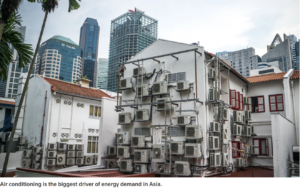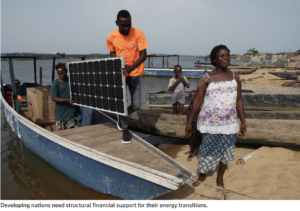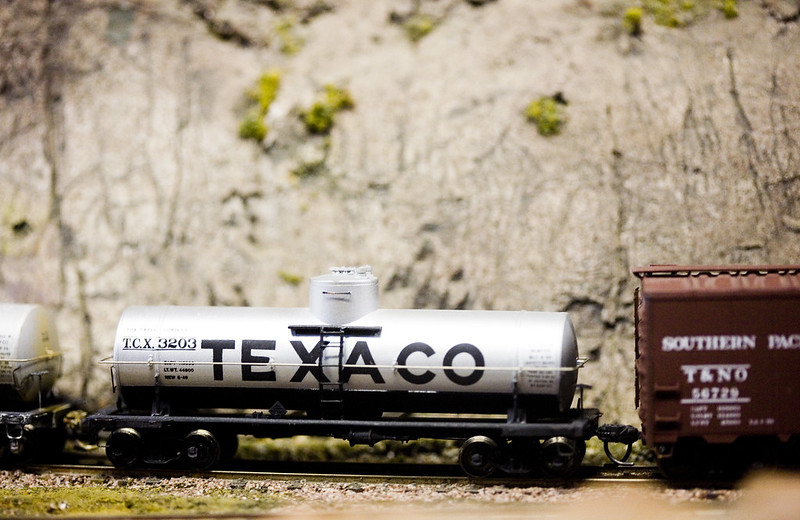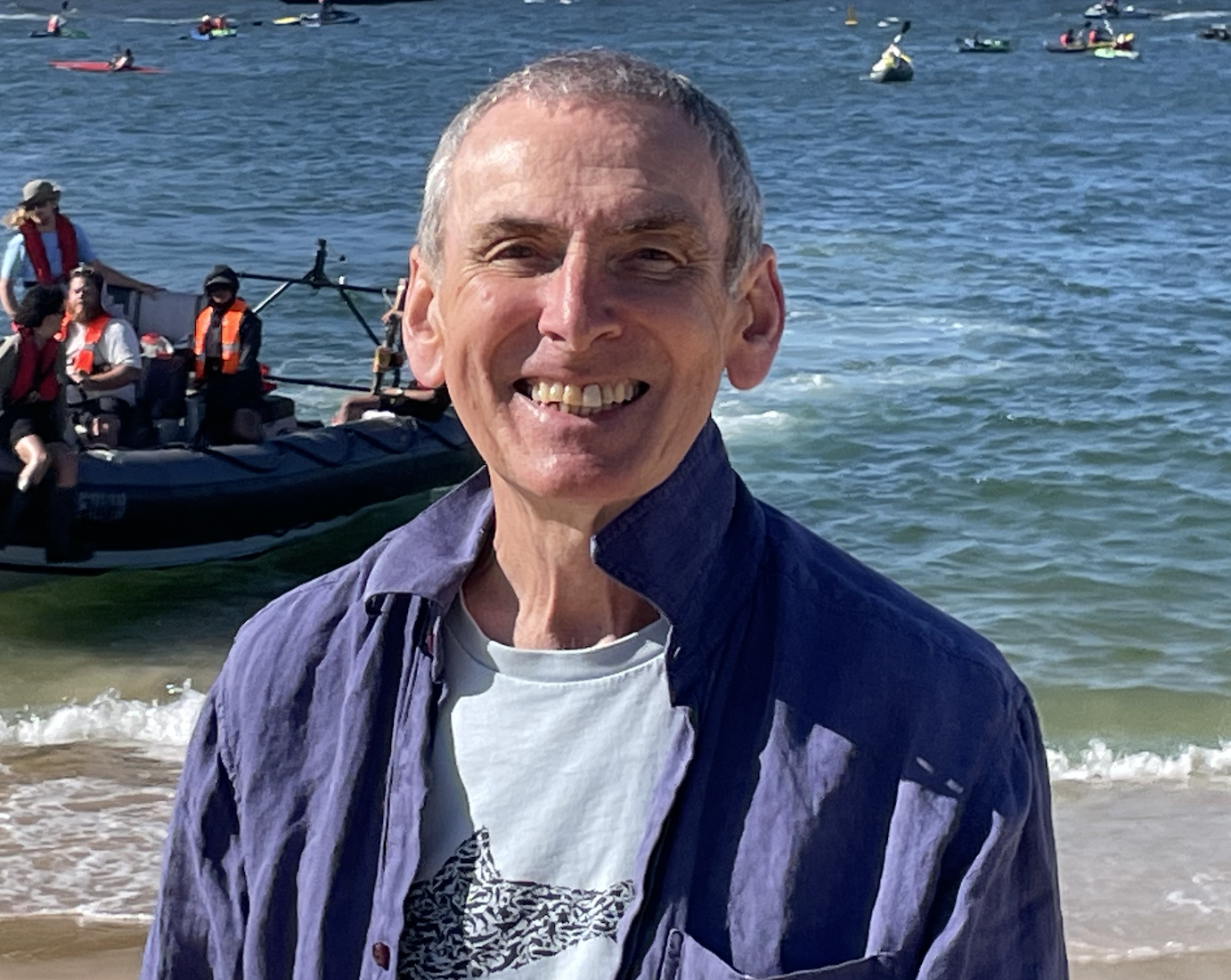Environment: Destroying wetlands increases methane emissions
February 27, 2022
We’re destroying wetlands and their methane is killing us. Big Oil can’t be trusted but nor can the EU’s climate commitments. Boomers leave their great grandkids a tenth of what they enjoyed.
Wetlands and methane
Is this …
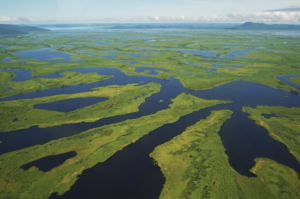
… the source of this?
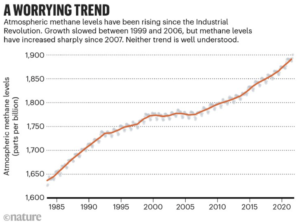
CO2 is the major cause of global warming but there is increasing concern (except among members of the Australian government) about methane for two reasons: 1) its concentration in the atmosphere has been rising rapidly for the last fifteen years, and 2) in the short term, which is what matters at the moment, it’s a far more potent greenhouse gas than CO2. The reasons for the increase aren’t fully understood but there are various likely contributors including increasing fugitive emissions from the regrettably increasing production of fossil fuels, and more emissions from landfill sites, growing livestock herds, and drying of wetlands such as the Pantanal in Brazil (pictured above) as climate change increases. Although fossil fuels account for just over a fifth of the methane released into the atmosphere, the biological processes mentioned above account for about two-thirds. A warming Earth that dries wetlands and stimulates more release of methane is possibly establishing a difficult to break vicious circle. And while (good news) research is ongoing into identifying and measuring the precise causes of the increasing methane emissions, the (bad news) emissions aren’t waiting, they keep increasing.
Inadequate reporting by countries of their annual methane emissions certainly doesn’t help us to understand what’s going on. A new report from the International Energy Agency indicates major discrepancies between the emissions reported to the UNFCCC and independent estimates based on new technologies including satellite and drone monitoring. As the figure below demonstrates, countries’ own reports need to be increased significantly to accurately reflect their true emissions from agriculture (+11 per cent), waste (+33 per cent) and, the daddy of them all, energy (+71 per cent).
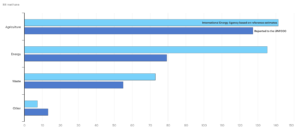
People may think of peat bogs as bug-infested wastelands good only for digging up and burning, draining and turning into farmland, or damming and flooding to create hydroelectric schemes. Not so, says the New York Times which has put together an easy-to-read, online information ‘page’. Peatlands make up 3 per cent of Earth’s land but store twice as much carbon as all the world’s forests. This is because peatlands are so soggy that organic materials can’t fully decompose and the carbon in them is locked underground. That also explains the interesting archaeological and natural remains we hear have been discovered in bogs from time to time. Humans have already drained about 15 per cent of the world’s peat bogs which now release two billion tons of carbon every year. Again, this causes more global warming and more drying of the remaining peatlands, which of course releases more carbon, etc. etc. The best things humans can do is stop draining the bogs, halt global warming and re-wet drained peatlands. The Times’s information page is illustrated and written in the style of a toddler’s picture book but the text is probably beyond most 3 year olds.
The NYT has a much longer article about a relatively intact peatland, larger than two Tasmanias, and the communities who live in it in the Democratic Republic of Congo. Confession: I haven’t read it all but, like a good 3 year old, I did look at the pictures!
Who’s building the most renewable energy?
Which state in the USA led the field with the construction of renewable energy projects in 2021? The fruits and nuts of California? New York’s go-getters? Green Vermont? Thoroughly-woke Massachusetts? No, none of those.
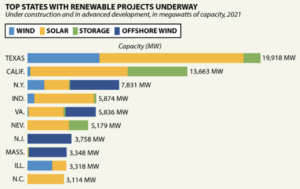
Who’s burning the most wood for energy?
A little while ago I discussed the problem of trees in the southern states of the USA being chopped down, turned into pellets, shipped to Europe and burnt to generate electricity; a situation that arises because the European Union regards biomass as a renewable fuel and even pays companies to burn it. This 4-minute video highlights the same process of turning forests into fuel occurring within Europe, not only in the rapidly industrialising nations of the old Soviet bloc but also in Germany, France, Finland and Sweden. A staggering third of the EU’s renewable energy comes from burning wood. As well as undermining policies to tackle climate change and loss of biodiversity, burning wood on an industrial scale generates an immense amount of air pollution. “We can plant trees but not forests”, says Professor Cramer, and they certainly don’t grow and absorb CO2 in the few years we’ve got left to prevent a disaster.
Big Oil simply can’t be trusted
Big Oil “… has made consuming its products seem like a human necessity. It has confused the public about climate science, bought the eternal gratitude of one of America’s two main political parties, and repeatedly out-maneuvered regulatory efforts. And it has done all this in part by thinking ahead and then acting ruthlessly. While the rest of us were playing checkers, its executives were playing three-dimensional chess.”
So begins Naomi Oreskes who has great form as an exposer of the lies, obfuscation and political shenanigans used by corporations (particularly Big Tobacco) to ensure that their harmful products continue to be consumed by the unsuspecting public, all to maintain their massive profits. In _“How ‘Big Oil’ works the system and keeps winning”_ Ms Oreskes has teamed up with Jeff Nesbitt to illustrate how the US oil and gas industry has maintained its influence and profits ever since the break-up of Standard Oil in 1911, a move that tripled John D Rockefeller’s wealth. Through undermining Rachel Carson’s exposure of the harms of DDT in Silent Spring (Dr Seuss makes a cameo appearance here), to the promotion of healthy-sounding “natural” gas rather than the nasty implications of “methane”, and, when the public mood changed, abandoning blatant climate denial for the equally obstructive ‘yes, but not yet’ climate delaying tactics. “Now that we’re in a race to a clean energy future, it’s time to recognize that they simply can’t be trusted as partners in that race. We’ve been fooled too many times” conclude Oreskes and Nesbitt. (In my naivety, I’d never realised that Esso represents S-O, Standard Oil.)
If you are interested in hearing more about Ms Oreskes’s work, directly from her, she’ll be speaking on “Who pays for science? Does it matter?” in a UNSW Centre for Ideas webinar on March 29th.
Hey Boomers, stop whingeing
For the world to hit net zero emissions by 2050 and keep global warming under 1.5 degrees Centigrade, children born today will need to have average lifetime emissions of CO2 that are a tenth of, not to be precious, people like me. The average lifetime emissions of each person born in the 1950s is about 350 tonnes of CO2. The figure for babies born in the 2020s is about 34 tonnes. Are you listening, Boomers?
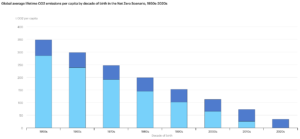
That’s quite some intergenerational inequity – no wonder the young people are in the streets and in the courts making their feelings clear. But it looks even worse when you look specifically at the average lifetime emissions of each person in high-emitting countries. The baby boomers’ average lifetime emissions (almost 700 tonnes) will be 14 times greater than and today’s babies (just over 50 tonnes). The intergenerational difference for developing countries is less because their lifetime emissions per person are lower – 155 tonnes for 1950’s babies and 33 tonnes for today’s, a five-fold difference. Equity demands that wherever a baby is born by the middle of the century their average lifetime emissions will be the same across the world.
The study is not based on a 2050 world of pre-industrial technology and personal austerity, by the way. Rather, it assumes that the global economy will double between 2020 and 2050 but that this will (must!) be accompanied by changes in technologies and lifestyles that deliver justice, environmental sustainability and comfort.
Note to young and old, rich and poor, developed and developing: Power must be taken, it is never given.
Causes, victims and solutions …
… not always easy to tell them apart.
